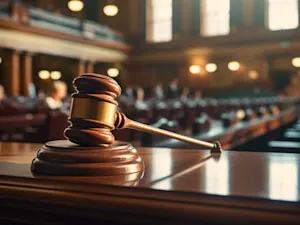
10 Dark Secrets of the Enron Scandal
The Enron scandal is one of the most infamous cases of corporate fraud in history, leaving a lasting impact on the business world. Despite extensive media coverage, there are still many lesser-known details about the collapse of this once-mighty energy giant. Here are 10 surprising facts about the Enron scandal that you might not know.
1. Enron's Meteoric Rise
Enron was founded in 1985 through a merger between Houston Natural Gas and InterNorth. By 2000, it was the seventh largest company in the United States and a darling of Wall Street, with a stock price that had increased by over 100% in the previous year.
2. The Role of 'Mark-to-Market' Accounting
Enron's use of mark-to-market accounting allowed it to record potential future profits as actual earnings. This dubious practice was key to its ability to report inflated earnings and hide its mounting debts.
3. The Shocking Bankruptcy
On Dec. 2, 2001, Enron filed for Chapter 11 bankruptcy protection, marking the largest bankruptcy in U.S. history at the time, with losses totaling $74 billion. This event triggered widespread financial turmoil and led to significant legislative changes in corporate governance.
4. Sherron Watkins: The Whistleblower
Sherron Watkins, a vice president at Enron, played a crucial role in exposing the company's fraudulent activities. In August 2001, she warned CEO Kenneth Lay that Enron could, according to CNN, "implode in a wave of accounting scandals". Her warnings were initially ignored, but her courage eventually brought the truth to light.
5. The Fall of Arthur Andersen
Arthur Andersen LLP, Enron's accounting firm, was found guilty of obstructing justice for shredding Enron-related documents. This conviction led to the dissolution of one of the largest and most respected accounting firms in the world.
6. Enron Online: A Digital Pioneer
Enron was ahead of its time with its online trading platform, Enron Online. Launched during the dot-com boom, it executed trades worth $2.5 billion daily by 2001, showcasing Enron's ambition and innovation. However, this digital venture couldn't save the company from its underlying fraudulent practices.
7. Executives' Profitable Exit
Before Enron's collapse, several top executives, including CEO Jeffrey Skilling and CFO Andrew Fastow, sold off their Enron stock, reaping millions in profits. Meanwhile, lower-level employees were encouraged to invest their retirement savings in Enron stock, leading to devastating losses for many.
8. The Infamous 'Special Purpose Entities'
Enron CFO Andrew Fastow created special purpose entities (SPEs) to hide Enron's debts and inflate profits. These off-the-books partnerships allowed Enron to maintain the illusion of financial health while concealing its financial troubles.
9. The Sarbanes-Oxley Act
The Enron scandal prompted the U.S. Congress to pass the Sarbanes-Oxley Act in 2002. This legislation introduced significant reforms to improve corporate accountability and prevent future fraud, including stricter regulations on auditing practices and increased penalties for destroying or altering financial records.
10. Skilling's Legal Battles
Jeffrey Skilling, Enron's former CEO, faced 35 counts of fraud and insider trading. Initially sentenced to over 24 years in prison, his sentence was reduced by more than 10 years after he agreed to forfeit $42 million, which was distributed among the victims of the Enron fraud.
The Enron scandal remains a cautionary tale of corporate greed and the importance of ethical business practices. Its legacy continues to influence the corporate world, reminding us of the dire consequences of fraudulent behavior.
References: Enron Fast Facts | Britannica - Enron scandal | 10 Things We Didn't Learn From Enron Scandal
























